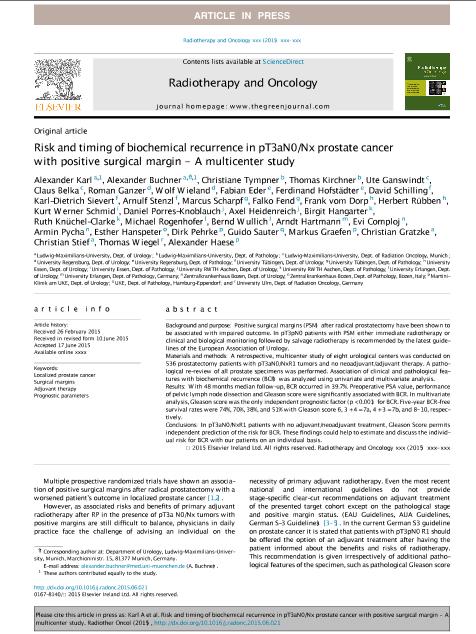
暂无数据~
Breast cancer statistics, 2017, racial disparity in mortality by state 
In this article, the American Cancer Society provides an overview of female breast cancer statistics in the United States, including data on incidence, mortality, survival, and screening. Approximately 252,710 new cases of invasive breast cancer and 40,610 breast cancer deaths are expected to occur among US women in 2017. From 2005 to 2014, overall breast cancer incidence rates increased among Asian/Pacific Islander (1.7% per year), non-Hispanic black (NHB) (0.4% per year), and Hispanic (0.3% per year) women but were stable in non-Hispanic white (NHW) and American Indian/Alaska Native (AI/AN) women. The increasing trends were driven by increases in hormone receptor-positive breast cancer, which increased among all racial/ethnic groups, whereas rates of hormone receptor-negative breast cancers decreased. From 1989 to 2015, breast cancer death rates decreased by 39%, which translates to 322,600 averted breast cancer deaths in the United States. During 2006 to 2015, death rates decreased in all racial/ethnic groups, including AI/ANs. However, NHB women continued to have higher breast cancer death rates than NHW women, with rates 39% higher (mortality rate ratio [MRR], 1.39; 95% confidence interval [CI], 1.35-1.43) in NHB women in 2015, although the disparity has ceased to widen since 2011. By state, excess death rates in black women ranged from 20% in Nevada (MRR, 1.20; 95% CI, 1.01-1.42) to 66% in Louisiana (MRR, 1.66; 95% CI, 1.54, 1.79). Notably, breast cancer death rates were not significantly different in NHB and NHW women in 7 states, perhaps reflecting an elimination of disparities and/or a lack of statistical power. Improving access to care for all populations could eliminate the racial disparity in breast cancer mortality and accelerate the reduction in deaths from this malignancy nationwide. CA Cancer J Clin 2017;67:439-448. © 2017 American Cancer Society.

Risk and timing of biochemical recurrence in pT3aN0/Nx prostate cancer with positive surgical margin – A multicenter study 
Abstract Background and purpose Positive surgical margins (PSM) after radical prostatectomy have been shown to be associated with impaired outcome. In pT3pN0 patients with PSM either immediate radiotherapy or clinical and biological monitoring followed by salvage radiotherapy is recommended by the latest guidelines of the European Association of Urology. Materials and methods A retrospective, multicenter study of eight urological centers was conducted on 536 prostatectomy patients with pT3aN0/NxR1 tumors and no neoadjuvant/adjuvant therapy. A pathological re-review of all prostate specimens was performed. Association of clinical and pathological features with biochemical recurrence (BCR) was analyzed using univariate and multivariate analysis. Results With 48 months median follow-up, BCR occurred in 39.7%. Preoperative PSA value, performance of pelvic lymph node dissection and Gleason score were significantly associated with BCR. In multivariate analysis, Gleason score was the only independent prognostic factor (p < 0.001) for BCR. Five-year BCR-free survival rates were 74%, 70%, 38%, and 51% with Gleason score 6, 3 + 4 = 7a, 4 + 3 = 7b, and 8–10, respectively. Conclusions In pT3aN0/NxR1 patients with no adjuvant/neoadjuvant treatment, Gleason Score permits independent prediction of the risk for BCR. These findings could help to estimate and discuss the individual risk for BCR with our patients on an individual basis.

The multifaceted roles of intrinsic disorder in protein complexes 
Abstract Intrinsically disordered proteins (IDPs) and intrinsically disordered protein regions (IDPRs) are important constituents of many protein complexes, playing various structural, functional, and regulatory roles. In such disorder-based protein complexes, functional disorder is used both internally (for assembly, movement, and functional regulation of the different parts of a given complex) and externally (for interactions of a complex with its external regulators). In complex assembly, IDPs/IDPRs serve as the molecular glue that cements complexes or as highly flexible scaffolds. Disorder defines the order of complex assembly and the ability of a protein to be involved in polyvalent interactions. It is at the heart of various binding mechanisms and interaction modes ascribed to IDPs. Disorder in protein complexes is related to multifarious applications of induced folding and induced functional unfolding, or defines the entropic chain activities, such as stochastic machines and binding rheostats. This review opens a FEBS Letters Special Issue on Dynamics, Flexibility, and Intrinsic Disorder in protein assemblies and represents a brief overview of intricate roles played by IDPs and IDPRs in various aspects of protein complexes.


暂无数据~

 V5
V5
